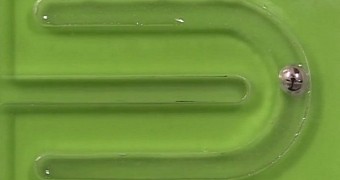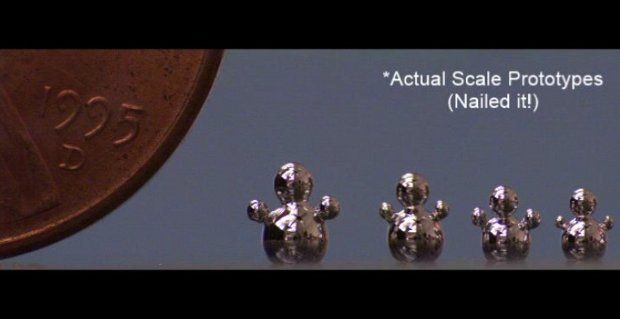In a recent paper in the science journal Advanced Materials, researchers in China detail how, while experimenting with liquid metals, they kind of, sort of recreated the “Terminator 2: Judgement Day” shape-shifting robot in the lab.
No, the Tsinghua University scientists did not actually put together a liquid metal robot assassin. They probably wouldn't have had the chance to sit and write a paper detailing their work if they had.
Instead, they created a liquid metal droplet able to move on its own with no outside help and even alter its shape to squeeze through labyrinths. True, a self-propelling liquid metal droplet is a far cry from a vicious shape-shifting robot. Still, it's a step in the right direction.
Possibly the weirdest droplet ever to come out of a lab
The liquid metal droplet assembled by the brainiacs who worked on this research project, shown in the video below, was essentially an alloy of gallium, indium and tin, the former being the chief ingredient.
The Tsinghua University researchers say that, when they attached a bit of aluminum to this droplet and exposed it to sodium hydroxide or even to salt water, the teeny tiny liquid metal robot mock-up started moving on its own and kept going for about an hour.
This happened because, after having merged with the liquid metal droplet, the aluminum added to it reacted with the sodium hydroxide or with the salt water and produced bubbles that propelled the alloy, Phys Org explains.
At the same time, the gallium, indium and tin alloy itself reacted with the solution around it and began spinning as a result of a charge imbalances. The spinning birthed a so-called flow field that encouraged the liquid metal droplet to move forward.
When placed in labyrinths, the droplet proved more than capable of changing its shape to fit through them and navigate them with surprising ease. The droplet even managed to easily move around corners.
The scientists behind this series of experiments say that one day hopefully in the not-too-distant future this technology could be used to deliver all sorts of materials either through pipes or even through blood vessels. Still, they stress that further research is needed.
Not the first liquid metal robot put together by scientists
In September 2014, researchers at the North Carolina State University in the US published a study detailing their use of low voltages to trick drops of liquid metal into taking various shapes.
The liquid metal that these scientists worked with comprised gallium and indium. In its usual state, this alloy takes the form of nearly perfectly spherical blobs. When they exposed them to low voltages, the specialists convinced the blobs to form surprisingly detailed silhouettes.
For some reason, the scientists insist that the silhouettes were similar to the “Terminator 2” liquid metal assassin. The thing is that, as illustrated in the image below, they were more like miniature snowmen.

 14 DAY TRIAL //
14 DAY TRIAL // 


